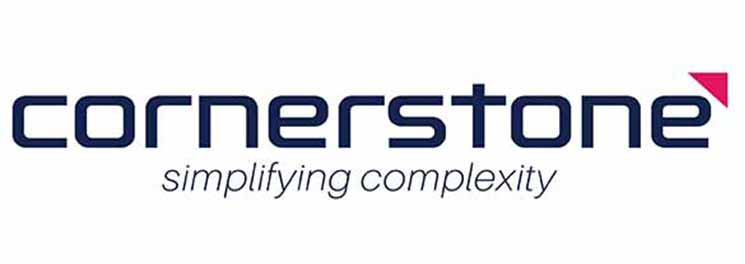
Navigating Uncertainty: Sustaining a Healthy Cash Conversion Cycle
Maintaining a healthy cash conversion cycle is more critical than ever in today’s volatile market. By addressing controllable factors and using technology to support data-driven decisions, CFOs can navigate uncertainty and drive financial stability.
It’s a near inescapable part of doing business: when the economy slows, the company’s cash conversion cycle tends to degrade. At the same time, cash becomes king when credit is tight and revenue is uncertain. Working together, these two factors can make life very challenging for CFOs looking to maintain a healthy cash flow.
With a post-pandemic economic landscape littered with supply chain disruptions, persistent inflation and the easing of government stimulus measures, it was perhaps almost inevitable that all elements of the cash conversion cycle were likely to worsen across the board.
Almost inevitable – but perhaps not quite. Like so many things in life, improving your cash conversion cycle means striking a balance between the factors you can’t control (inflation, non-paying customers and geo-political disruption, for instance), and those you can.
What is the cash conversion cycle and why is it important?
CFOs will be very familiar with the concept of the cash conversion cycle. It’s a key metric that describes the time it takes for a company to convert its investments in inventory and other resources into cash flows from sales, reflecting the efficiency of its working capital management.
Effective management of the cash conversion cycle is essential for maintaining liquidity and using cash and resources efficiently. While measures of an ideal cash conversion cycle vary from industry to industry – and even company to company – shorter is always better (in fact, imagine a world where your customers pay you earlier than you have to pay your own suppliers – your customers could effectively fund your day-to-day operations).
A short cash conversion cycle ensures cash flow remains healthy. On the other hand, a prolonged cycle can strain liquidity, making it challenging to cover operational costs and pay your bills, invest in growth opportunities, raise capital or deliver returns to shareholders.
As a concept, the cash conversion cycle is relatively straightforward to understand and calculate – add together your Days Inventory Outstanding (DIO) and Days Sales Outstanding (DSO), then subtract Days Payable Outstanding (DPO). However, those figures have been trending upwards in recent times, particularly since the pandemic, and that isn’t a good thing.
There are several drivers behind this trend, most of them linked to economic conditions. For example, higher DIO is often a reflection of the fact that your potentially cash-constrained customers aren’t buying in the same quantities. Higher DSO may reflect that those same customers are having difficulty meeting the agreed payment terms.
The cash conversion funnel
While ‘cycle’ is the official term, we like to think of the cash conversion cycle as more of a funnel, where cash flows through different stages of your operations.
At the top of the funnel, cash is invested in inventory, which then flows down to the stage of sales, turning into accounts receivable. Finally, at the narrow end of the funnel, this receivable is converted back into cash as payments are collected, completing the cycle. The shorter and more efficient the funnel, the quicker the cash is recovered, and the better your liquidity.
A short and efficient funnel is good, however there are a range of factors that can impact this. For example, a reduction in sales means the base of your funnel has narrowed. One treatment might be to increase the base through marketing and promotional activities – however there are other considerations, too.
Let’s say your base (sales) has narrowed, and you haven’t made an appropriate adjustment to what you’re pouring in the top of the funnel (inventory). Not only will you suffer the impacts of a slower flow-through to EBITDA from decreased sales; you also need to contend with the inefficiency of the extra inventory, such as the additional cost of warehouse space to store the inventory.
You’re effectively filling the holes in the side of your cash conversion funnel, with money leaking out the side.
Control what you can, let go of what you can’t
Having cash-constrained customers is a good example of a factor outside your control. What is within your control is how you manage those customers with a view to improving your cash conversion metric (for example, by standardising payment terms across customers and ceasing service to those who can’t meet them).
Also within your control is leveraging technology to support more efficient decision making by your people to plug the holes in your funnel. By highlighting where you need to make improvements within the financial forecast, the right tools can also help to take the emotion out of decisions relating to customers and suppliers.
For example, an automated supply plan will update what you need to make, buy or move on a near real-time basis and let you know if you need to reduce or cancel previously estimated requirements.
Finally, a robust integrated business planning (IBP) process – underpinned by truly collaborative processes between Finance, Supply Chain and other key departments – enables transparency between financial metrics and the operational metrics used to run the business. Critically, it will also support modelling to determine the potential impacts of various scenarios related to accounts receivable, accounts payable and inventory on key financial metrics such as EBITDA – and consequently, the cash conversion cycle.
Navigating cash conversion cycle uncertainty
Maintaining a healthy cash conversion cycle might be more challenging than ever, yet the power to do so is in your hands. By leveraging technology and nurturing cross-departmental collaboration, CFOs can plug the leaks in their cash conversion funnel and steer the ship towards financial resilience.
We are enablers of change and transformation in Supply Chain, Information Management, Financial Planning & Analytics, Management Consulting, Project Management, and Managed Application Services. Contact us to find out more about how we work with your teams or call 1300 841 048.





